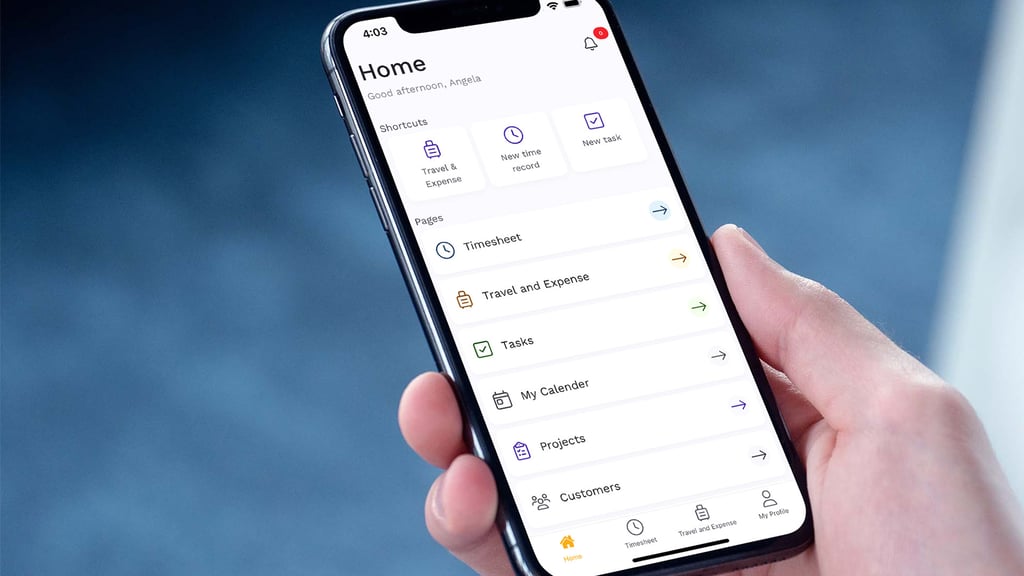5 steps towards successful project management
Do you want to improve your project management processes? It can be difficult to find out where to start. To help you out, we have set up 5 steps you should follow.
1. Plan your resources
Misunderstandings and mistakes can often lead to unnecessary costs in your projects, having to spend resources to correct mistakes and redo work. Good planning in the initial phases will increase the probability of a successful project, where you and your customers are satisfied with the result.
Find out how many hours you can use and divide them among the weeks and resources you have at your disposal in each phase. This allows project members, project managers, as well as the managing director, to see how much time each employee can spend each week. As the project progresses, the team can see updated information about registered hours compared to what's been planned. Resource management increases budget consciousness and provides a safety net for the project manager.
2. Add prices and price changes right away
To create a smooth invoicing process, it's wise to analyze where you can cut down on administrative work (which often are pure costs). At the moment a contract has been signed, add the prices that have been agreed into the system, along with agreed hours and necessary customer info. This will help the invoicing process run on auto-pilot, and you will have full control over profitability from beginning to end.
If you discover that more hours are necessary to deliver the project than what was agreed, then contact the customer to discuss the possibility of some additional hours if your contract allows it. If no agreement can be reached with the customer, you can create an activity with a "non-billable" price model that you can use to log your additional hours. This way you won't have to correct these hours later on, and you will ensure that invoices are sent with the correct amount of billable hours. Even though most projects should be billable, we recommend that you add a non-billable price model for work that doesn't generate income from the beginning. This lets you have a full overview of all hours that do not produce income and can easily distinguish the percentage of billable hours vs. non-billable hours.
3. Approve hours continuously
Most companies that sell hours have experienced using more hours than planned. For example, if employees register their hours late, spend more than planned, or make input errors. This is often discovered when the office manager is about to send the invoice, or even worse when a customer complains about an invoice being wrong. By then it's too late to do anything about the hours that have been used, plus you have to spend time correcting the invoices.
 Luckily, there are other alternatives: As soon as a project member registers her hours in a project, those hours should be available for approval by the project manager. This allows the project manager to gain full control over time spent as soon as a time record is registered. If something isn't according to plan, the manager can notify the project members immediately. This helps immensely in seeing that everyone is working according to plan, and that time records are correct and approved long before invoicing.
Luckily, there are other alternatives: As soon as a project member registers her hours in a project, those hours should be available for approval by the project manager. This allows the project manager to gain full control over time spent as soon as a time record is registered. If something isn't according to plan, the manager can notify the project members immediately. This helps immensely in seeing that everyone is working according to plan, and that time records are correct and approved long before invoicing.
But, it's not easy (or recommended) to review registered hours on all projects every day. To ensure that you don't overspend your budget, a notification for registered hours relative to estimated hours is useful. In Moment you can decide which percentages will trigger an email- notification, for instance, when you have reached 50%, 70%, and 90% of estimated hours per activity.
4. Follow up on payments
You might be used to having an office manager who takes care of invoicing. If so, we (still) recommend that you, as the project manager, keep control of payments from customers in your projects. Automatic payment updates can be arranged through an "OCR agreement" that you make with your bank. Speaking of automatization, we highly recommend sending electronic invoices to your clients. This is sent directly from you to your client's invoice system, ensuring that the invoice will end up with the correct recipient, immediately. Sending invoices electronically is much faster than by paper or PDF, and often allows for faster payment. Also, you will have an updated invoicing history, including information about what has been sent, when, and to whom. Also, your CFO will be happy because electronic invoicing is cheaper than handling transactions manually!
If an invoice is overdue, you should immediately send a payment reminder. In Moment you will automatically get a list of overdue invoices. Here you can select the ones that should have a payment reminder and send them by e-mail using a predefined text. To maintain good customer relationships, the first notice can be sent without a late payment fee or surcharges. If the customer does not pay after 1-2 friendly reminders, you should stop the project and make direct contact with the customer and arrange a payment plan.
5. Evaluate the project
How was the profitability of the project? Where did we lose or gain money? Analyzing profitability helps you to make better estimates and make more profitable deals on future projects. By analyzing multiple projects and comparing them, you can create a picture of what type of projects you should be focusing your efforts on and should prioritize going forward. In Moment you can see acquired income per hour, the employee true cost of a project, and the contribution margin ratio. By using tags you can also see how much is invoiced and non-billable per type of project.


